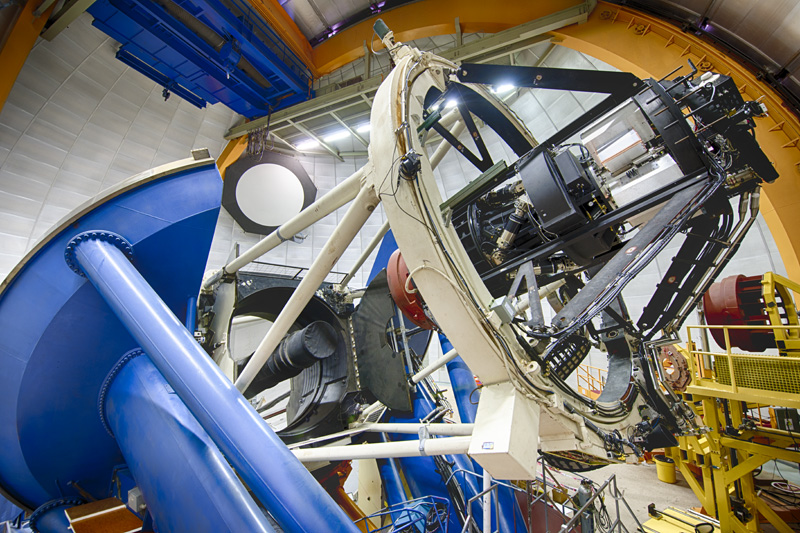Special camera allows astronomers to create first-ever dark energy map

Image: Reidar Hahn/Fermilab
Astronomers are celebrating the first-ever map of dark energy in the cosmos, thanks to a special camera designed to capture images of the otherwise invisible force that is thought to permeate the universe.
Scientists with the Dark Energy Survey, which includes astronomers at Texas A&M University, released the first in a series of dark energy maps during a recent national meeting in Baltimore.
The first map covers roughly 3 percent of the total area the survey plans to image during its five-year run, which ends in 2018. As the largest contiguous maps created at this level of detail, each subsequent map should enhance the understanding of dark matter’s role in the formation of galaxies.
Texas A&M astronomers Darren DePoy, Louis Strigari and Jennifer Marshall, and graduate student Ting Li, are among 300 members of the international, interdisciplinary collaboration that spans 25 institutions and six nations.
The survey is made possible by the Dark Energy Camera, a 570-megapixel imaging device that serves as the primary instrument for collecting data. DePoy served as the project scientist for the Dark Energy Camera, which is mounted on the Blanco telescope at the Cerro Tololo Inter-American Observatory in Chile.
DePoy said, “These sorts of measurements, otherwise known as weak lensing, have been almost impossible previously because the required combination of wide-area scope, deep sensitivity in order to detect very faint galaxies and exquisite image quality – which in this case is a combination of excellent ‘seeing’ from the Cerro Tololo Inter-American Observatory site in Chile and careful control of the focus and other optical aberrations in the camera.”

